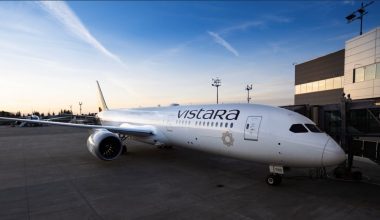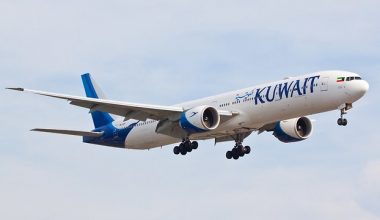Needless to say, becoming a pilot is a career choice for many people who aspire to propel their professional ambitions to a new height and venture into daily adventure high-up amidst the sky. The pilot is a highly rewarding career with a handsome salary, high responsibility, and the excitement of working at a staggering height of over 30,000 ft. Since it is a highly-skilled role, pilot training is a must-have course to acquire and hone airmanship skills and get one step closer to achieving pilot aspirations and career goals. One of the most-asked questions regarding this course is ‘Is pilot training a degree course’? This article intends to answer this query and other important information critical to upcoming pilots for their potential future.

Is pilot training a degree course?-No
A pilot training course is designed to learn how to fly and impart the knowledge required to be a professional aviator. It offers the main route to the pilot profession by enabling you to practice flying techniques safely, efficiently, and competently while also gaining knowledge of basic aircraft controls, air regulations, navigation, operational procedures, weather conditions, routes, aeromedical and aerodynamic situations, etc. A pilot training is a fast-paced program encompassing several months of rigorous training with minimum flying hours.

In response to the query, ‘Is pilot training a degree course?’, the answer is no. It’s important to understand that pilot training is not a degree course because what you get after completing the pilot training course is not a degree certificate but a license. Pilot training is a license-based course that officially puts you in the aviation industry and builds your future with it. Getting a solid bachelor’s degree from a top university doesn’t qualify you to fly an aircraft; a pilot license does. Nonetheless, those who receive pilot training aren’t directly qualified to earn a pilot license as other requirements exist. The Federal Aviation Administration (FAA), the US civil aviation regulator, requires an individual to log the aeronautical flight experience requirement of 250 hours, possess a private license, and pass several tests to obtain a commercial pilot certificate in an airplane. But no one can deny that pilot training is the easiest way to embark on the path towards becoming a pilot.
There are several types of pilot licenses that you can train for, such as private pilot licenses, commercial airline licenses, instrument ratings, commercial single/multi-engine, certified flight instructor and flight instructor instrument, etc. After getting the private pilot license, you can move further in the flight career by adding other advanced certificate licenses.
A degree course is usually a 3-4 years program offered by colleges and universities that involves academic and vocational study. Although an undergraduate degree from an accredited university takes you closer to soaring through the skies, flight training offers you a more viable option. It prepares you for the job that you will actually do. If you are fully geared to becoming a commercial airline pilot, you can dive straight into private training instead of working toward a bachelor’s degree and pursuing a pilot career.
Do you need a degree course to become a pilot?
A degree course is not required to fly an airplane or become a pilot; rather, you must undergo rigorous training and clock in minimum set hours to get a pilot license. A pilot license is a stringent regulation that grants you legal permission to fly an aircraft. A degree certificate in any field, including aviation, doesn’t certify you as an airline pilot. Pilot training is a must-have for anyone who wants to get a pilot job, and it doesn’t require a degree course.
Is the degree completely unnecessary?
Like every other field, the flying profession is very competitive, and a degree course helps you set yourself apart from a pack of similarly qualified pilots and increases your chances of getting hired. A pilot training isn’t as extensive as a degree course, so you will have a greater depth of knowledge in the industry as a whole by doing a course.
If you want to take some time on your journey to the skies, you may pursue university routes that are usually of long duration and that you can fall back on if required. It is secure because you have a fall-back option in extreme circumstances, opening up potential career options significantly more than just license-based pilot training. In fact, a degree course isn’t the opposite of pilot training because it tops up the academic qualification of the pilot-to-be and demonstrates his/her ability, discipline, and commitment to the career. Pilot training is not a degree course but a license-based program, and a degree course isn’t compulsory to get the pilot training.
Who can get pilot training?
As discussed earlier, you don’t need a university degree certificate to get pilot training, but a secondary education (high school) certificate specializing in English, mathematics, and physics will work. In addition, you must fulfill other necessary criteria set by the civil aviation authorities of your respective countries. In the US, you must be a minimum of 16 years of age and be able to read, write, and understand the English language to enroll in student pilot certificate training. For the private pilot certificate, the age bar is at least 17 years, and the educational qualification is 10+2 (high school). Besides, it is important to pass the FAA medical requirement to gain most pilot certificates. Not to forget, money is the critical factor as it costs above $70000 to get the flight training and certification needed to become a commercial pilot with flight instructor certificates.
Pilot training is not a degree course, but how does it work?
The training for each pilot license differs as it proceeds through the levels from fundamentals to the advanced.
Initially, the journey to the pilot career begins with obtaining of private pilot license. Private pilot training equips you with the needed skills to use the equipment and fly the aircraft. The private pilot certificate program marks the first major milestone at the very onset of your pilot career and sets the foundation by training you to navigate small aircraft and fly in and out of civil airports. The duration of a private pilot certificate varies from 2-3 months to a couple of years, depending upon the weather, availability, finance, and student ability.
Before applying for the private pilot license, it is mandatory to meet all aeronautical experience requirements and hold a student pilot certificate. In the US, FAA evaluates candidates during the practical test for a private pilot certificate. The private pilot candidate must meet the aeronautical flight experience requirement; a minimum of 40 hours of flight time, including 20 hours of flight training with an authorized instructor and 10 hours of solo flight.
A private pilot license clears the path for the commercial pilot certificate, which legally allows you to get paid as a pilot. Moving to Commercial Pilot License (CPL) from Private Pilot License (PPL) requires gaining 250 hours of flight time and a second-or first-class medical certificate and clearance of commercial pilot knowledge and practical test. It takes around 4-9 months to become a commercial pilot and exercise the privileges of flying as pilot-in-command of an aircraft for compensation or hire.
Rising through the levels, the next step in a pilot’s career is flight instructor certification which allows pilots to earn a living flying. It’s the time to execute your flight training learning in real life and build actual hands-on flight experience. In addition to earning you a paycheck, a flight instructor certificate helps you meet airline and corporate hiring minimums.
As you progress, add the multi-engine rating to the commercial pilot certificate to fly large passenger jets and gain relevant flight experience to fulfill the flight hour requirement of the Airline Transport Pilot (ATP) certificate. It requires at least 1500 hours of total flight time to meet the hiring minimums of most regional commercial airline pilot jobs. Usually, it takes an extended period of time to accumulate those hours and land a decent pilot job. The completion of the Airline Transport Pilot certificate marks the highest level of pilot certificate obtainable and will open a wide array of job opportunities with several corporate and private airlines.
Bottom line
A pilot training is not a degree course but a practical program with a stipulated time duration, focusing on hands-on practical flying time and instruction to get a pilot license. The duration of pilot training varies according to the level of pilot license, which depends on several factors.
A degree course is not compulsory to get pilot training, but it opens a slew of opportunities for careers in aviation that pilot training alone doesn’t. The timeframe of pilot training starts from Student Pilot Certificate to Airline Transport Certificate, with each certificate demanding certain requirements. Make sky your workplace by becoming a pilot.






